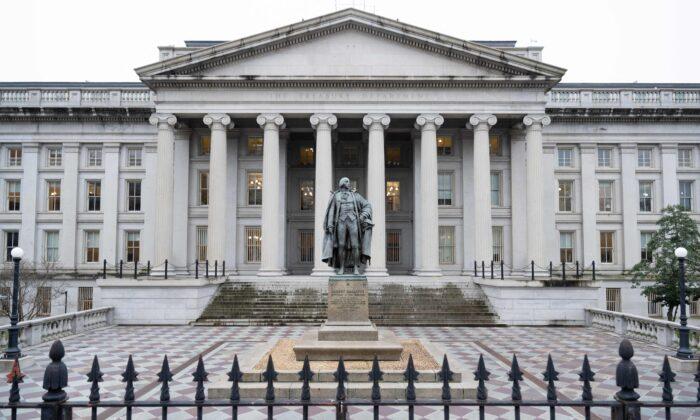The U.S. government could avoid defaulting on its debt through July if the Treasury Department can receive enough revenue in June, according to the Congressional Budget Office (CBO).
But Washington still faces a “significant risk” of defaulting on its debt in the first two weeks of June, with CBO officials warning that the federal government may no longer be able to cover all its obligations after the middle of June.
In addition, according to the CBO, the uncertainty will persist for the rest of May.
“The extent to which the government will be able to fund the government’s ongoing operations will remain uncertain throughout May, even if the Treasury ultimately runs out of funds in early June,” the nonpartisan watchdog stated in the latest report. “That uncertainty exists because the timing and amount of revenue collections and outlays over the intervening weeks could differ from CBO’s projections.”
How the Treasury would respond if the U.S. government runs out of money and if the extraordinary measures are no longer sufficient remains unclear. Government payments, such as federal grants, paychecks for federal workers, and food stamps, could largely be affected or postponed.

The CBO warned that the Treasury’s defaulting on the debt or delaying payments “could result in distress in credit markets, disruptions in economic activity and rapid increases in borrowing rates for the Treasury.”
Treasury Secretary Janet Yellen echoed those comments, warning that a failure to raise the debt ceiling “really impairs our credit rating.”
“If Congress doesn’t raise the debt ceiling, we face economic and financial catastrophe one way or the other.”
During the debt ceiling debate in 2011, Standard & Poor’s downgraded the U.S. credit rating for the first time ever, from AAA to AA+.
A meeting between President Joe Biden and congressional leadership had been scheduled for May 12, but it was postponed to this week because there wasn’t “enough progress for the leaders to get back together.”
“Their wish list could cut thousands of jobs—including wildland firefighters, National Park rangers, and workers who regulate water quality,” Biden wrote. “It doesn’t work for families.”
White House press secretary Karine Jean-Pierre called it “a manufactured crisis,” adding that there is “a lot of urgency” to resolve this “potential devastation” for the economy and U.S. households.
Update to the Budget Deficit
In a separate report, the CBO also updated its 2023 projection for the federal budget deficit, increasing it to $1.5 trillion. However, it stated that the “estimate is subject to considerable uncertainty ... in part because of a recent shortfall in tax revenues.”It also projects that the budget deficit will rise to $2.9 trillion by 2033. The report further revised the cumulative deficit through 2033 upward by $51 billion, to $20.314 trillion.
Maya MacGuineas, the CRFB president, agreed that it’s necessary to raise the debt limit immediately “without drama and without any threat of default.” She also said that the president and lawmakers must “enact some budget savings and reforms.”
“With inflation surging and debt approaching a record share of the economy, there is little time to waste. And with the debt limit deadline well in sight, lawmakers must act as soon as possible to make sure the country can pay its bills. Default cannot be an option.”





